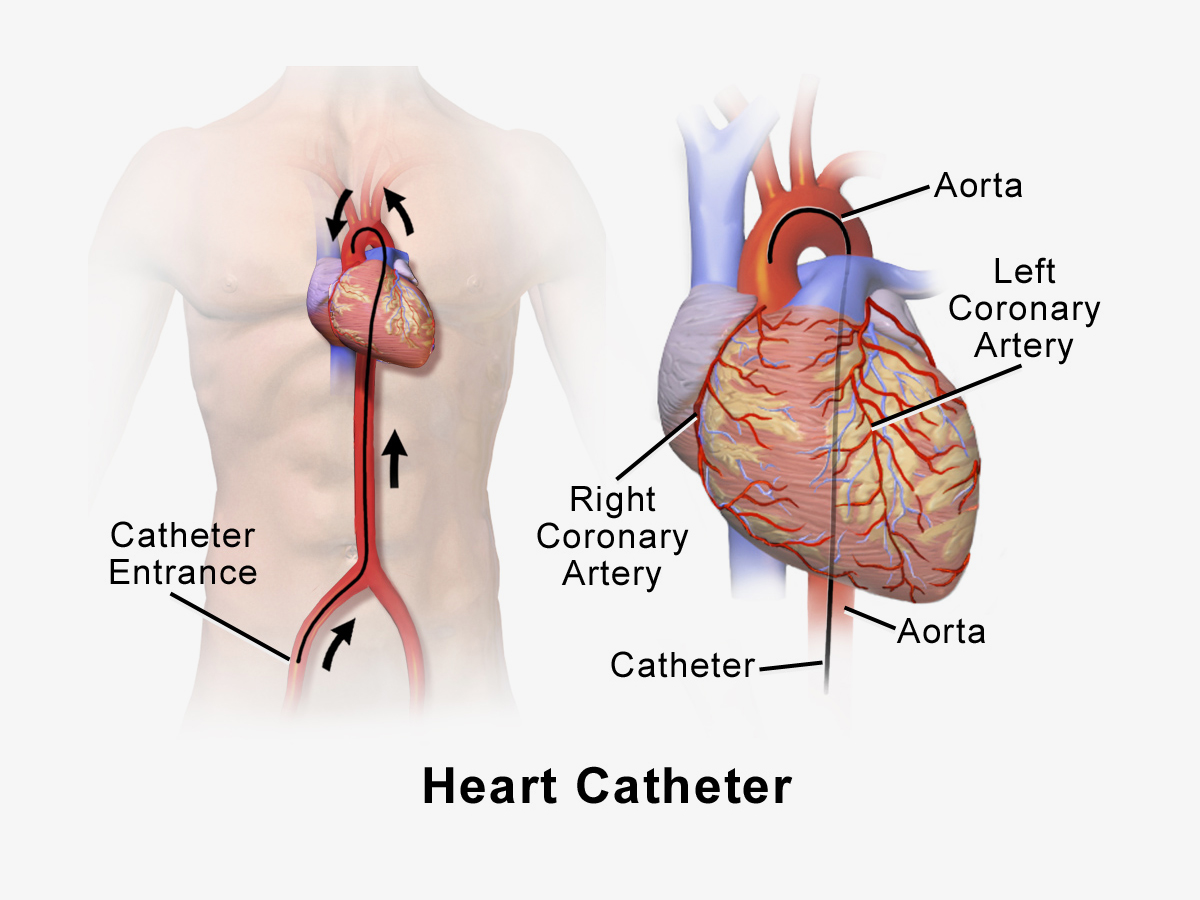 Cardiac Catheterization and Coronary Angiography
Cardiac Catheterization and Coronary Angiography
Cardiac Catheterization is a technique that uses long thin tubes called catheters, about the size of a spaghetti noodle, that are used to measure pressures in the heart chambers and blood vessels, and it also allows your doctor to obtain images of the coronary arteries (the arteries that provide blood flow to the heart muscle), also known as coronary angiogram.
Coronary angiography is a technique that uses X-Ray dye injection directly into the coronary arteries so these arteries can be visualized with an X-Ray machine. It creates a motion picture of the arteries that allows your doctor to determine with a very high degree of precision if there are any blockages in the coronary arteries.
To perform a cardiac catheterization your doctor introduces a small “IV-like” tube in a vessel of the leg or the arm, and through that entry port the catheter is introduced and advanced into the heart chambers and into the orifice where the coronary arteries arise from the root of the aorta. During the procedure, the patient receives mild sedation for comfort purposes. In most cases, catheters do not cause any sensation or discomfort when placed inside the body so more profound degrees of sedation are usually not required. A diagnostic cardiac catheterization can take approximately 20 minutes to complete and the results are available immediately.
When coming to the hospital for cardiac catheterization it is recommended that the patient bring a relative or friend as driving is not allowed the same day after receiving sedation. In many cases cardiac catheterization is an outpatient procedure that can be scheduled from the office.